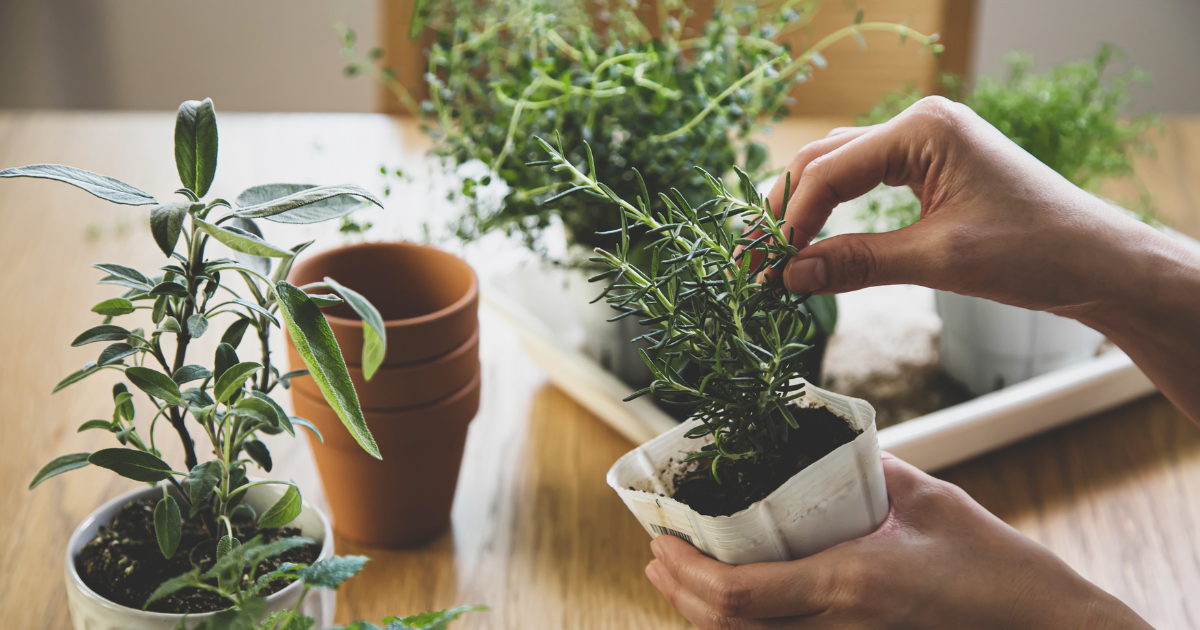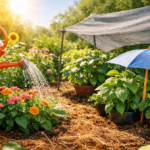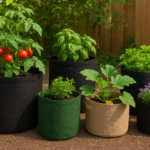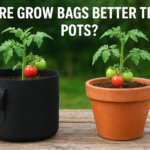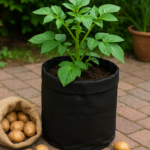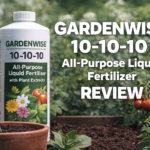Pollinating indoor plants manually, often termed “hand pollination,” is a vital skill for houseplant enthusiasts seeking to encourage their plants to bloom and bear fruit. This practice becomes essential indoors where natural pollinators like bees and butterflies are absent. Understanding how to effectively pollinate your houseplants enhances their health and vitality and increases the likelihood of successful fruiting or flowering.
This guide will explore the tools, techniques, and timing necessary for hand-pollinating various common indoor plants. Whether aiming to produce seeds, enjoy home-grown fruits, or ensure your flowering plants reach their full potential, mastering hand pollination can significantly impact your indoor gardening success.
Understanding Pollination
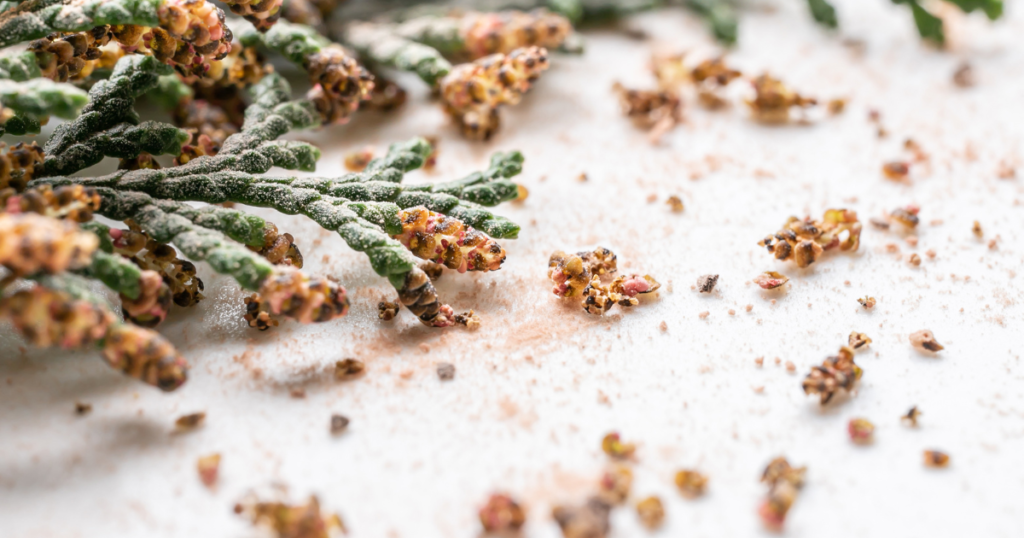
Pollination involves the transfer of pollen from the male part of the flower (anther) to the female part (stigma). This process is crucial for fruit production and the reproductive cycle of plants.
Pollination is a fundamental biological process that many plants rely on to reproduce. This process involves the transfer of pollen from the male part of a flower (the anther) to the female part of the same or another flower (the stigma). Successful pollination can lead to fertilization, producing seeds and, consequently, the next generation of plants.
Types of Pollination

There are primarily two types of pollination: self-pollination and cross-pollination. Self-pollination occurs within the same flower or plant, while cross-pollination involves the transfer of pollen between two flowers, often of different plants of the same species. Depending on their nature, indoor plants may require human assistance for either type.
There are two main types of pollination: self-pollination and cross-pollination.
Self-pollination occurs when a flower is pollinated by pollen from the same or another flower on the same plant. This method can lead to a quick and guaranteed production of seeds, though it often reduces genetic diversity.
Cross-pollination, on the other hand, involves the transfer of pollen from one plant flower to another. This type usually requires the involvement of external agents such as insects (bees, butterflies), birds, wind, or water. Cross-pollination promotes genetic diversity, which can enhance the resilience and adaptability of plant species.
Manual Pollination Techniques
Manual pollination mimics the natural process using simple tools and techniques. This is particularly useful for plants not exposed to pollinators like bees or butterflies.
Tools Required for Pollination
Standard tools include soft brushes, cotton swabs, or even a fine artist’s brush. The key is to use something that can mimic the gentleness of a bee’s touch without harming the delicate parts of the flower.
Preparing to Pollinate Your Indoor Plants

Before you begin pollinating, it’s essential to understand and prepare your indoor garden setting to ensure success.
Preparing to pollinate your indoor plants is a crucial step that requires attention to detail and an understanding of your plant’s specific needs. Here are vital steps to ensure you are ready to successfully pollinate your indoor garden:
Identify the Pollination Needs of Your Plants
Not all plants require human assistance for pollination, but many indoor varieties do because natural pollinators are absent. Research whether your plant species benefits from self-pollination or cross-pollination and plan accordingly.
Ensure Plants are Healthy
Healthy plants are more likely to successfully pollinate and produce fruit. Ensure your plants are well-nourished, watered, and free from pests and diseases. A stressed plant will have more difficulty producing viable flowers and fruits.
Understand the Flowering Cycle
Familiarize yourself with your plants’ flowering cycles. Pollination must occur when the flowers are mature and open, as this is when they are most receptive to pollen. The timing can be crucial, particularly for plants that flower infrequently or for a short period.
Gather the Necessary Tools
Depending on your chosen method, you might need a fine brush or cotton swab to transfer pollen. These tools should be clean and soft enough to not damage the delicate flower parts.
Create an Ideal Environment
The right environmental conditions can enhance pollination success. Ensure that your indoor garden has adequate light, humidity, and ventilation to mimic natural conditions as much as possible. Some plants may require shaking or vibration to release pollen, which can be simulated by gently tapping or vibrating the flower stem.
Practice the Technique
Suppose you are new to hand pollination. Practice transferring pollen without damaging the flower. You can gently touch the brush to the anthers and then transfer pollen to the stigma. Getting a feel for this can prevent damage during actual pollination.
How Choosing the Right Time to Pollinate?

The best time for pollination is during the blooming period when flowers are fully open and pollen is visible. This usually occurs in mid-morning after the dew has evaporated.
Choosing the right time to pollinate indoor plants is crucial for ensuring successful fertilization and subsequent fruit or seed production. Here are key points to help you identify the optimal time for pollination:
- Observe Flower Maturity: The best time for pollination is when flowers are fully mature and open. This is the stage when they are most receptive to pollen. Each plant species has a specific point in its bloom cycle when it’s ready for pollination, so familiarize yourself with your plant’s requirements.
- Monitor Pollen Release: Pollen is most viable for many plants shortly after the flowers open. You can sometimes see visible pollen on the anthers, which may be released when gently tapping the flower.
- Daytime Pollination: Most plants are best pollinated in the morning. The temperature and humidity at this time are often ideal for pollen to stick to the stigma.
- Environmental Cues: Some plants are influenced by environmental factors like light and temperature. For example, certain orchids only release their pollen at specific temperatures.
- Regular Checks: During the blooming period, check your plants daily. This ensures you can take advantage of the short window when pollination is most likely successful.
How to Identifying Pollination Ready Plants?
Look for flowers that are vibrant in colour with exposed stamens and a visible, sticky stigma. These are signs that the plant is ready to be pollinated. Identifying when your indoor plants are prepared for pollination is essential to optimize the success of your hand-pollinating efforts. Here are several steps and signs to help you determine if your plants are pollination-ready:
- Examine Flower Development
The most obvious sign that a plant is ready for pollination is the development of its flowers. Look for fully open blossoms, typically when pollen is most receptive. Flowers still in bud form or that have started to wilt are unsuitable for pollination.
- Check for Pollen Viability
In many flowering plants, the anthers (the part of the stamen that holds the pollen) open up and release pollen when ready. You might see pollen as a fine, powdery substance on the anthers or notice that it easily comes off when gently touched. Pollen might be sticky or have a distinct colour for some species, which helps identify it.
- Observe the Stigma
The stigma (the part of the pistil that receives the pollen) should also be inspected. A receptive stigma often appears slightly sticky or shiny, and in some cases, it may be enlarged. This stickiness helps the stigma capture and hold onto the pollen grains.
- Consider the Plant’s Bloom Cycle
Understanding your plant’s bloom cycle is crucial. Some plants have a concise window when the flowers are receptive to pollen, sometimes only a few hours, while others may remain receptive for several days. Research your specific type of plant to better understand this timing.
- Environmental Factors
Environmental conditions such as humidity, temperature, and light can affect a plant’s readiness for pollination. For example, high humidity can enhance the stickiness of the stigma, improving its ability to capture pollen, while certain plants may only release pollen under specific temperature conditions.
- Physical Changes
In some plants, you might notice physical changes that indicate readiness for pollination, such as the opening of protective flower structures or a change in the flower’s colour. These changes often indicate that the plant is at the optimal pollination stage.
Do I need to pollinate indoor plants?
Whether you need to pollinate indoor plants depends mainly on your plant type and your goals with them. Here are some considerations to help you determine if you should engage in hand-pollinating your indoor plants:
Type of Plant
Some plants are self-fertile, meaning they can pollinate themselves without external assistance. However, many indoor plants, especially those that naturally rely on insect or wind pollination, might require help in a controlled indoor environment where these natural pollinators are absent.
Goal for Growing
- Flowering: If your primary interest is in having your plants produce vibrant flowers, you might not need to pollinate them, as flowers can grow without fertilization.
- Fruit Production: Pollination is essential for fruit-bearing plants. Plants like tomatoes, peppers, and indoor citrus trees will need pollination to yield fruit.
Plant Variety
Some exotic or specific plant cultivars are bred for indoor environments and might have different requirements. Check if your particular variety is dependent on pollination for its reproductive cycle.
Availability of Natural Pollinators
In outdoor gardens, bees, birds, butterflies, and other creatures assist in pollination. Indoors, these natural pollinators are not present, so if your indoor plants are of a type that requires pollination, you will need to do it manually.
Propagation
Pollination is necessary if you want to propagate your plants and produce seeds. Seeds can only be made following successful pollination and fertilization of the flowers.
Step-by-Step Guide to Pollinating Indoor Plants
Hand Pollination Method
Pollinating indoor plants by hand is a straightforward process that can enhance plant reproduction, particularly without natural pollinators. Here’s a concise guide on how to do it:
- Identify the Flowers: If they are different, determine which flowers are male and female. The male flower produces pollen, and the female flower has a stigma where the pollen needs to be deposited.
- Prepare Your Tools: Use a small paintbrush or cotton swab to transfer pollen. These tools should be clean to avoid transmitting diseases between plants.
- Collect Pollen: Gently brush the anthers of the male flower with your tool to collect the yellowish pollen grains. If the plant is self-pollinating, you will use the same or different flowers on the same plant.
- Transfer Pollen: Carefully dab the pollen onto the female flower’s stigma. Ensure that the pollen makes good contact with the sticky surface of the stigma.
- Repeat: Continue the process with other flowers on your plant or between plants if necessary.
Using Brushes for Pollination
Small brushes effectively pick up and deposit pollen. Lightly dab the pollen and then touch the stigma, ensuring it does not damage any part of the flower.
Using brushes for pollination is an effective technique, especially for hand-pollinating indoor plants where natural pollinators are absent. Here’s how to use brushes effectively for this purpose:
Choose the Right Brush
Select a small, soft-bristled paintbrush or a makeup brush. The bristles’ softness is key, as they allow for the gentle collection and transfer of pollen without damaging the delicate floral parts. The brush should be clean and dry before use to avoid introducing pathogens to the plant.
Gather Pollen
Gently touch the brush to the anthers of the male flower to collect the pollen. When the flower is fully mature, the anthers are usually loaded with pollen. A gentle tap or brush should coat the bristles with refined pollen grains.
Transfer Pollen to the Stigma
Carefully move the brush to the female part of the plant, specifically aiming for the stigma, which is typically sticky and ready to receive pollen. Gently dab or stroke the stigma with the brush, transferring the pollen from the brush to the stigma. Ensure thorough contact to maximize the chances of successful pollination.
Clean Your Brush
After pollinating, clean the brush thoroughly to remove any pollen or plant residue. This step is crucial to prevent cross-contamination between plant species or subsequent pollination sessions. Use mild soap and water, and let the brush dry completely before reusing it.
Repeat the Process
Repeat the process with each if you have multiple plants or flowers to pollinate. For plants with many flowers, such as tomatoes or peppers, ensure each flower gets pollinated to maximize fruit production.
Pollinating Specific Types of Indoor Plants
Each species may require slightly different approaches. For example, tomatoes benefit from gentle shaking of their stems, while orchids might need targeted pollen placement using a toothpick.
Pollinating specific indoor plant types requires understanding each species’ unique characteristics. Here’s how to effectively hand-pollinate a few common indoor plants:
Orchids
Orchids have a unique structure where the male and female parts are fused into a single organ called a column. Use a toothpick or a fine brush to transfer pollen from the anther cap (found at the top of the column) to the sticky stigma beneath it. Orchids require precise pollination, so gentle handling is crucial.
Tomatoes
Indoor tomato plants benefit from gently shaking their flowering stems or tapping the main stem with a stick to mimic the vibration caused by bees. This action helps release pollen. For a more direct approach, use a small brush to transfer pollen from one flower to another, touching each open flower.
African Violets
These plants are self-fertile but can benefit from hand pollination to increase fruit set. Use a soft brush to gently touch the pollen-covered stamen and then dab the pollen onto the stigma of the same flower or others in the plant cluster.
Peppers
Like tomatoes, peppers can be pollinated by lightly shaking the plant or using a small brush or cotton swab to transfer pollen from one flower to another. Ensure each flower receives some pollen for best results.
How to Caring for Pollinated Plants?
After pollination, plants need careful monitoring and maintenance to thrive.
Caring for pollinated plants is crucial to ensure that the efforts of hand pollination lead to successful fruit or seed development. Here are some critical tips on how to care for your pollinated indoor plants:
- Maintain Optimal Growing Conditions
Keep the plants in conditions that favour their growth and fruiting. This includes providing the right amount of light, temperature, and humidity. Most fruiting plants require bright light and a consistent temperature to thrive.
- Water Regularly
Watering plays a critical role in the development of fruits and flowers. Ensure the soil is consistently moist but not soggy. Overwatering can lead to root rot and other fungal issues, while underwatering, especially at the fruiting stage, can cause the plant to drop flowers or fruits prematurely.
- Provide Nutrient Support
After pollination, plants often need extra nutrients to support the growth of fruits and seeds. Use a balanced fertilizer with an appropriate nitrogen, phosphorus, and potassium mix. Phosphorus is essential as it aids in the healthy development of roots, flowers, and fruits.
- Monitor for Pests and Diseases
Watch for signs of pests and diseases, which can stress the plant and affect its ability to develop fruits or flowers. Regularly inspect your plants and promptly treat any infestations or infections to protect the developing fruits or seeds.
- Support Structures
Provide supports such as stakes or trellises for plants with heavy fruits, like tomatoes or peppers. This prevents the branches from breaking under the weight of developing fruits.
Common Challenges in Pollinating Indoor Plants
Sometimes, despite best efforts, pollination may fail. Common issues include improper timing, incorrect technique, or environmental stressors. Persistence and adjustments can often overcome these challenges. Pollinating indoor plants can present various challenges, mainly because natural pollinators like bees and wind are absent in indoor environments. Here are some common challenges and how to address them:
Lack of Natural Pollinators
Solution: Perform manual pollination using a small brush or cotton swab to mimic the action of natural pollinators.
Poor Pollen Viability
Solution: Ensure your plants are healthy and stress-free. Provide optimal lighting, watering, and temperature conditions to enhance pollen production and viability.
Incorrect Timing
Solution: Learn your plants’ flowering habits. Pollinate during the peak flowering period, when the pollen is most fertile and the stigmas are receptive.
Low Humidity
Solution: Increase indoor humidity levels using a humidifier or placing water trays near your plants. Many plants require higher humidity to ensure pollen sticks to the stigma.
Over or Under-Pollinating
Solution: Educate yourself on the specific needs of each plant species. Some plants may require multiple pollination attempts, while others might be sensitive to excessive handling.
FAQs
How often should I attempt to pollinate my indoor plants?
Pollinate whenever you observe new blooms, typically every few weeks during the flowering season.
Can all indoor plants be pollinated manually?
Most, but not all. Some plants, like those that produce very small or inaccessible flowers, need to be more suitable for manual pollination.
What is the sign that pollination has been successful?
The first sign is usually the development of fruit or seeds. Additionally, the flower might start to fade or drop off as the fruit develops.
Is it necessary to use chemicals to aid in pollination?
No, chemical aids are unnecessary and are typically not recommended for indoor use due to their potential harm to plants and humans.
Can I use water to help in pollination?
Water does not aid in pollination and can hinder the process by washing away or clumping the pollen.
Conclusion
In conclusion, hand-pollinating indoor plants is a valuable skill that can significantly enhance the productivity and beauty of your indoor garden. By understanding the specific pollination needs of each plant, employing the right tools and techniques, and providing ongoing care after pollination, you can overcome common challenges and ensure successful fruit and seed development. Whether for aesthetic enjoyment or practical purposes, mastering indoor plant pollination can be a rewarding addition to your gardening practices.
Read more post: What to Spray on Plants Before Bringing Indoors: Tips for Healthy Indoor Plants

